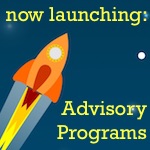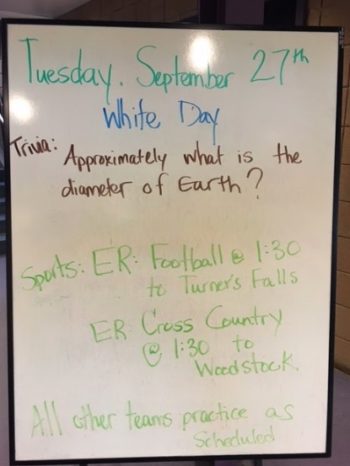How 30 minutes can leave a lasting impact on the day.
 Advisory: the first 15 to 30 minutes of every middle school day, during which you’re trying to build relationships with your students and engage them in meaningful social interaction.
Advisory: the first 15 to 30 minutes of every middle school day, during which you’re trying to build relationships with your students and engage them in meaningful social interaction.
You also might be fighting off the administrative minutiae of the morning: Attendance. Lunch money. Permission slips. Bus notes.
Let’s look at some strategies for powering up advisory programs
How to create a powerful, respectful advisory
#fwsu #vted 7/8th start their day in Advisory Group. Providing interaction with a caring adult in small groups. pic.twitter.com/gCvvplDIpc
— This Is Vermont Ed (@ThisIsVTed) September 15, 2016
In This We Believe, founders of the modern middle school movement urged for advisors for every child.
To date, one of AMLE’s 16 Characteristics of Successful Middle Schools is “every student’s academic and personal development is guided by an adult advocate”. That relationship between advisor and student is key. Currently, some middle schools and high schools are even making advisory a multi-age experience, so that students stay with the same advisor for several years.
Circle of Power and Respect
The Developmental Designs (DD) Middle Level approach is grounded in the belief that all children can learn when we teach and reinforce social skills and provide a safe and inclusive learning environment.
And one of the core practices of DD is the Circle of Power and Respect (CPR) advisory.
Circle of Power and Respect advisory meetings bring students together in a fun, lively, safe, respectful meeting format that reinforces the belief that,
“Students respect others and learn better in community when they get to know each other and practice, practice, practice listening and contributing to each other.”
Developmental Designs suggests that the Circle of Power and Respect contains the following structures in each advisory: Daily News, Greeting, Share, and Activity or Game.
What does a powerful, respectful advisory look like in a school?
Recently, I had the pleasure of hanging out with educator Tom Patuto’s advisory at Brattleboro Area Middle School, in Brattleboro VT to observe the power of this approach.
Daily News

Greeting
This is when the members of the advisory greet each other — with eye contact and friendly body language — at the start of each day. When I was a classroom teacher, I took the task of greeting each student very seriously. It occurred to me at one point, “For a certain kid, this could be the only eye contact and greeting by name that he or she gets today.” Take it seriously.
Share
Sharing can be both rewarding and fun, but also frustrating and awkward. As we know, some of our middle schoolers are open and communicative; others are quiet and introverted. Advisory is all about developing social skills, so those kids need to practice it!
Need ideas on what constitutes a successful share? Check out the video below.

Activity/Game
At this point, an advisor designs or facilitates an activity or game. Some advisors have students lead the game or activity. Others let students vote to select the game of the day.
Why advisory programs?
A meaningful advisory program can have important and lasting impacts. Students develop relationships with an adult mentor. Hopefully, one who connects with them on a meaningful level and mentors them for years. Students build relationships with one another and create a safe and inclusive environment. That community should be one that fosters and supports the radical growth that’s happening for these lucky adolescents.
How can you make your student advisory more powerful and respectful?
What changes would you find useful to help your students with their mornings? What are the obstacles to making that change? And how involved in planning the advisory are your students?
Hit us up in the comments.


4 Replies to “Power up your Advisory programs”
Comments are closed.